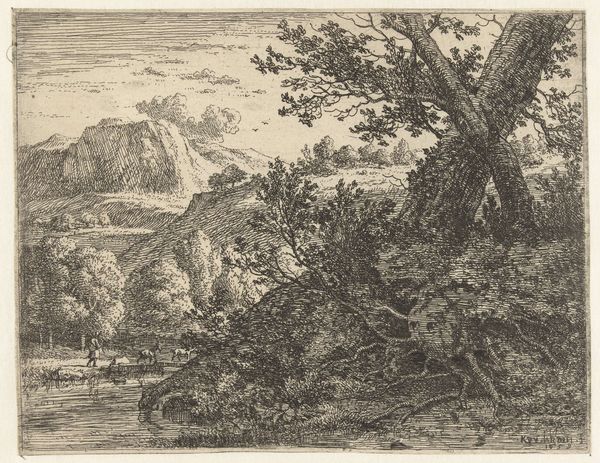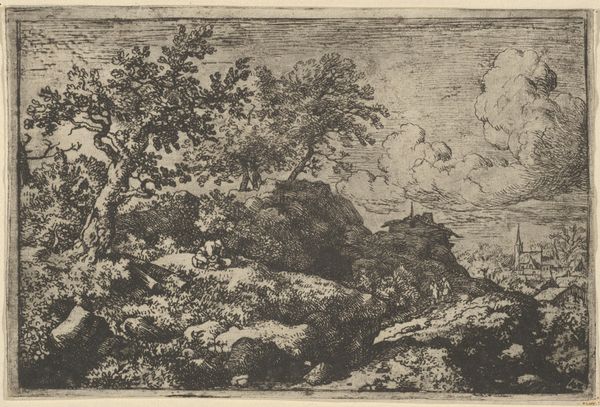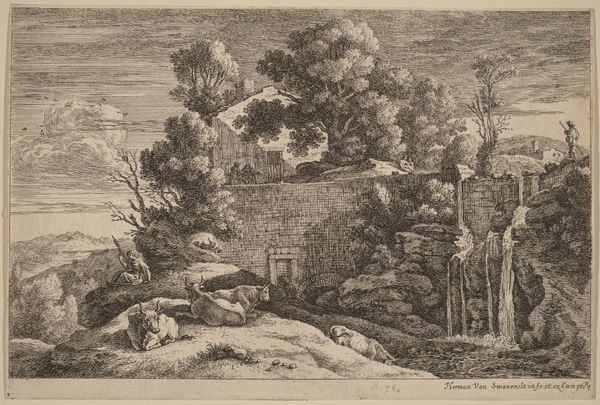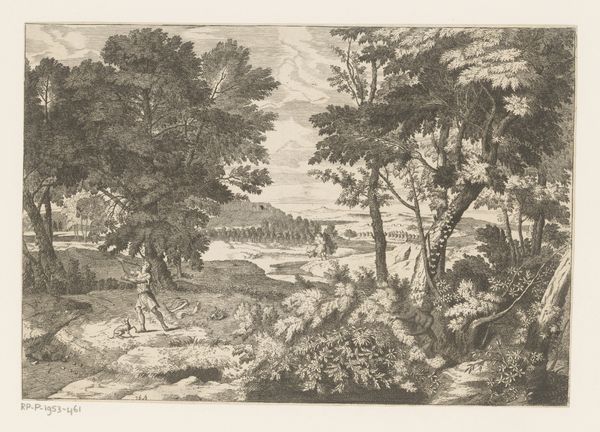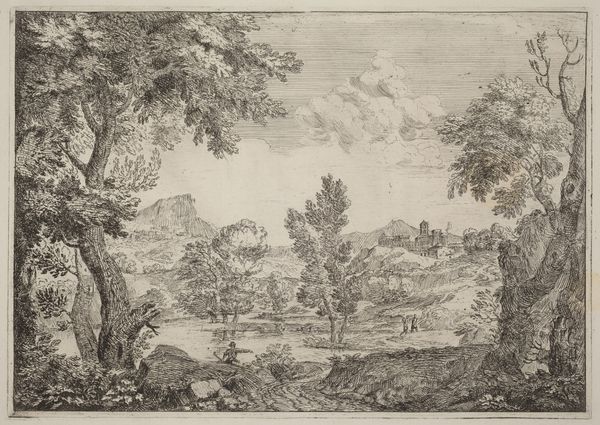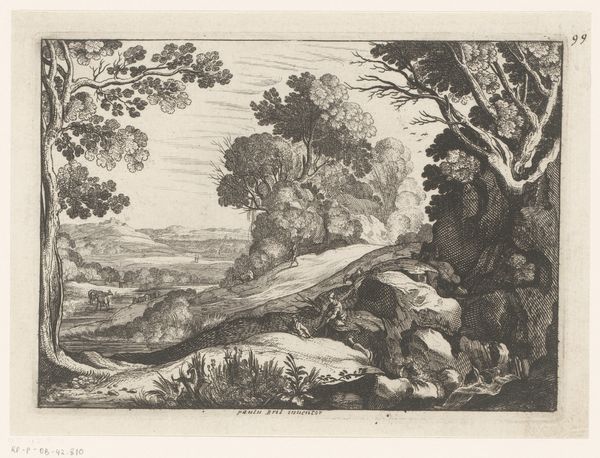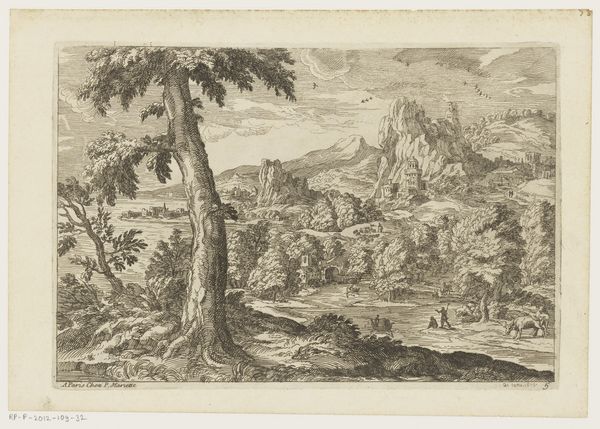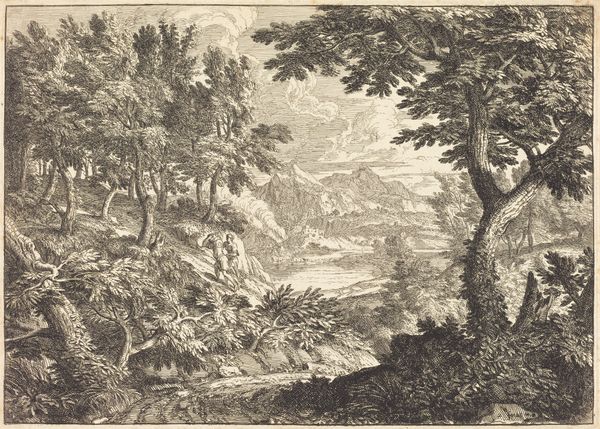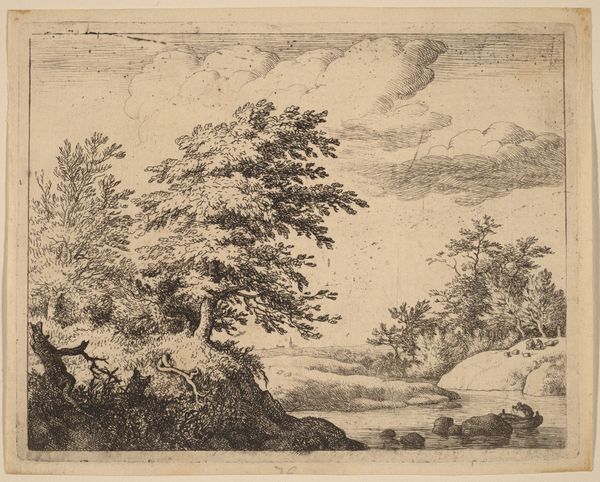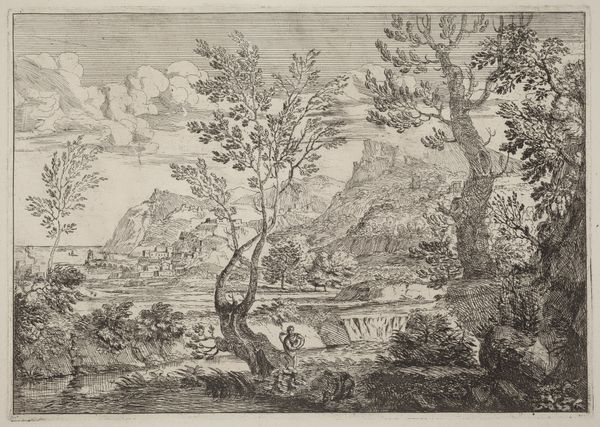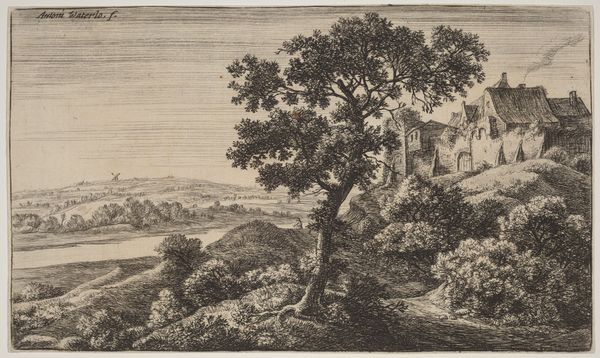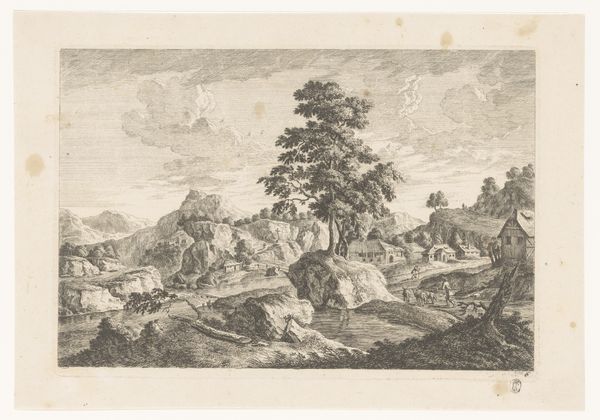
Tree with roots laid bare alongside a stream, a hilly landscape and a man walking behind quadrupeds beyond 1659
0:00
0:00
print, metal, etching, engraving
#
animal
#
dutch-golden-age
# print
#
metal
#
etching
#
landscape
#
river
#
etching
#
figuration
#
men
#
engraving
Dimensions: sheet: 5 13/16 x 7 5/16 in. (14.7 x 18.5 cm)
Copyright: Public Domain
This print, "Tree with roots laid bare alongside a stream, a hilly landscape and a man walking behind quadrupeds beyond" was made by Karel Dujardin in the 17th century. It's a work of etching, a printmaking process that relies on the corrosive action of acid. The image has a rawness to it, largely because the etched lines are so clear and spare. Look closely, and you can see how Dujardin has used varied densities of lines to create a full tonal range. He would have applied a waxy ground to a copper plate, scratched away the lines of the composition, and then submerged the plate in acid. The acid bites into the exposed metal, leaving behind the drawing. Ink is then pressed into these recessed lines and transferred to paper. What’s interesting here is the contrast between the obviously laborious process and the seemingly effortless image. Think of the many steps involved, and the artist's technical mastery, and then consider the final effect: a pastoral scene, as though observed in a fleeting moment. It's this alchemy, between work and vision, that gives the print its peculiar power.
Comments
No comments
Be the first to comment and join the conversation on the ultimate creative platform.
